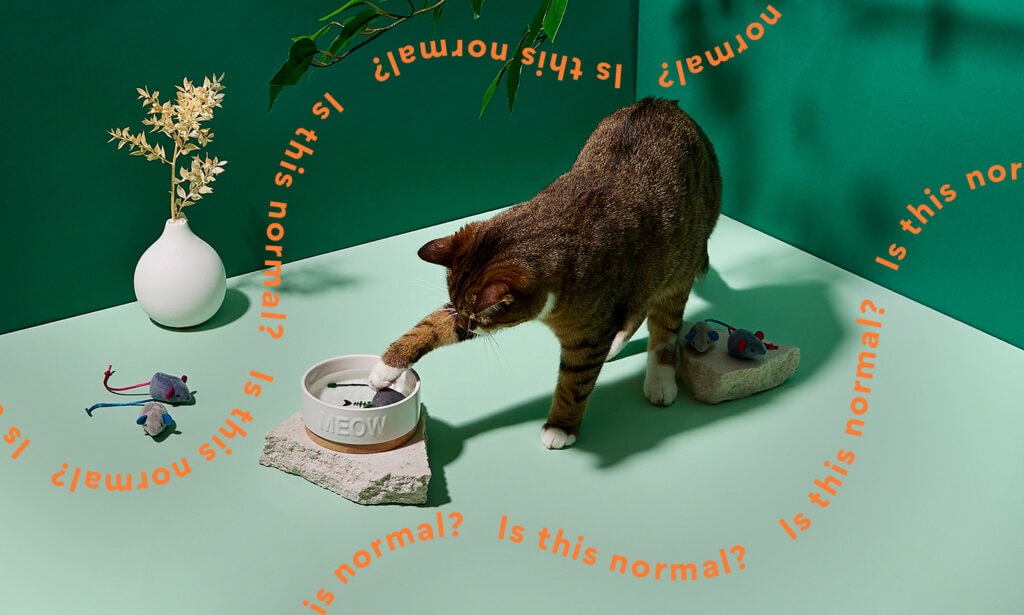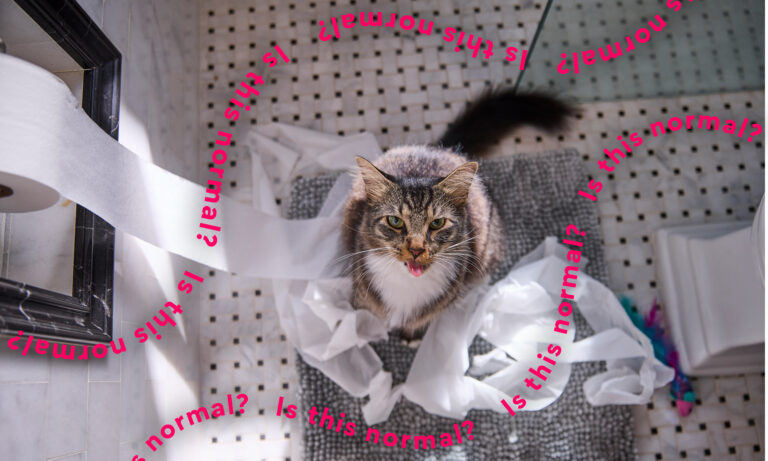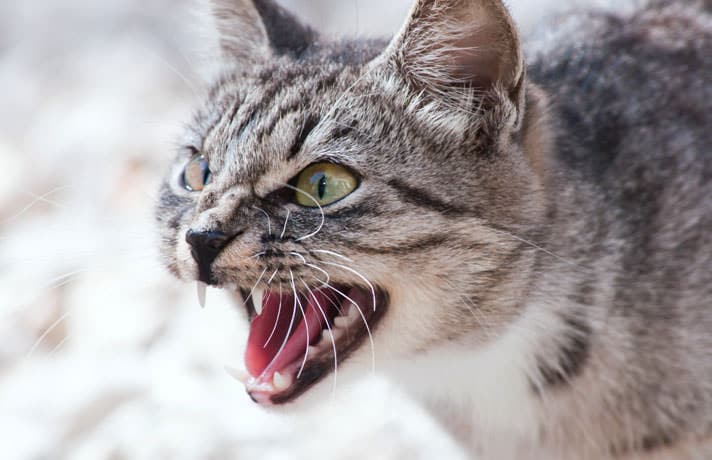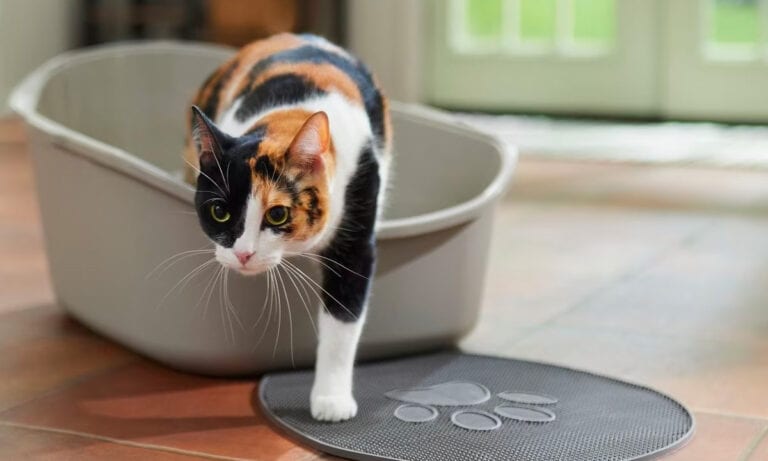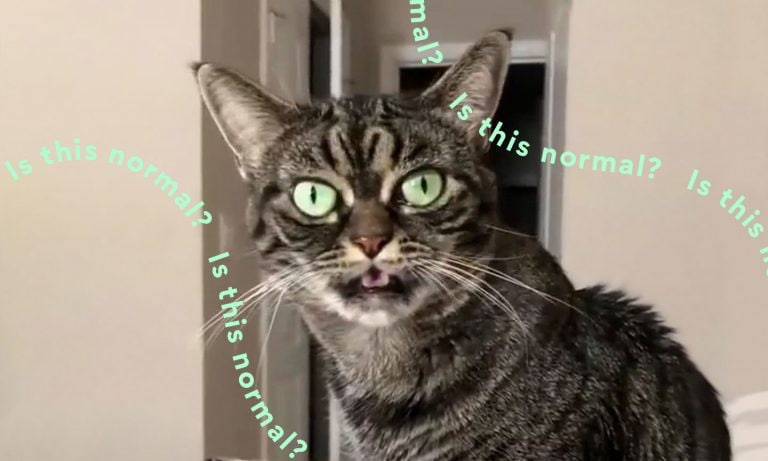Ever spot your cat dunking their stuffed mouse toy in their water dish? And not just once, but on more than one occasion? Well, rest assured, this quirky cat behavior is perfectly normal!
But why do cats put their toys in water? There are a few reasons why cats drown their toys—and most of them come down to “because they’re just being cats.”
Why Do Cats Put Toys in Water?

Chewy
Because cats may consider their toys their prey, they may be tapping into their wild cat instincts and drowning their prey. Or they may simply be having a little bit of fun in their water bowl. We spoke with cat behaviorists to get the lowdown on why cats drown their toys.
Let’s talk about those killer instincts first.
1. They’re Hunting
“There are some kinds of cats [who] actually do drown their prey,” says Marci Koski a certified feline behavior and training consultant with Feline Behavior Solutions in Vancouver, Washington. “Tigers love going into water, and it’s not unusual for them to drag their prey in with them.”
Koski notes there’s a wild breed of cat called the fishing cat who actually hunts fish and aquatic animals. “However,” she says, “the vast majority of cats, including our little domestic house kitties, are not typically aquatic predators.”
OK, so if they’re not trying to drown their toy (aka prey), then what are they doing?
2. They View the Bowl as a Safe Place
What many cats, regardless of their size or species, have a tendency to do is carry their toys to whatever they consider to be their own personal territory—“where they spend a majority of their time, or to a place where they feel safe,” says Beth McGonigal, CBCC, CPDT, owner of North Pittsburgh Animal Behavior in Gibsonia, Pennsylvania.
And that safe place just may be their food station.
“Most cats would associate their prey-based toys with food and choose to ‘collect’ them near their food and water dishes,” McGonigal explains.
3. They’re Playing a Game
Cats may even intend to drop those toys—their “prey”—into their food bowls, but they accidentally fall into their water dishes instead, Koski says.
“And then the cat might learn that it’s kind of fun,” she continues. “They’ll think, ‘This little mouse toy floats, it bounces if I hit it, and—oh my goodness, this is interesting!’
It becomes a fun little game or a stimulating form of play for them, Koski adds—"they’re not necessarily trying to further ‘drown’ the toy.”
And if we watch our cats do this—or if we laugh or give them positive attention—then McGonigal suggests that they might be prompted to keep “drowning” their toys just because they like the response that they’re getting.
Should I Stop My Cat From Putting Toys in Water?
While Koski doesn’t believe the behavior itself is problematic, she does advise keeping an eye out to ensure that the toys-in-the-water-dish situation isn’t keeping your cat from actually drinking water during the day. Also, make sure your cat is not drinking more water than usual as this can be a sign of underlying disease.
Here’s how to stop a cat from putting toys in their water:
- Keep food and water dishes separate from each other. Why? That’s how your cat may instinctively prefer things. (A wild cat would not put the prey they just caught near their water source because it could contaminate their water supply, she explains.)
- Have more than one water source for your cat. “If you only have one water dish, and toys are constantly ending up in it, that might present a cleanliness issue, which could discourage your cat from drinking out of that dish.” Consider getting your cat a fountain, like the PetNF drinking fountain. “A lot of cats really like running water,” Koski says.
- Switch to toys that do not resemble prey animals. McGonigal recommends feather chasers, puzzles, or string-based toys. But if you’re cool with your cat continuing with their water-play, you could place a silicone mat under their bowl to collect any spills and splashes.
- Only encourage this style of play at certain times, “when you’ve prepared for it,” Koski says. For example, you can put ice cubes in a bowl of water for your cat to bat around. “They can still have the same kind of engagement and stimulation, but you’ll be ready for it,” she adds.
This content was medically reviewed by Jo Cornett, DVM, Chewy veterinarian.
Share:
